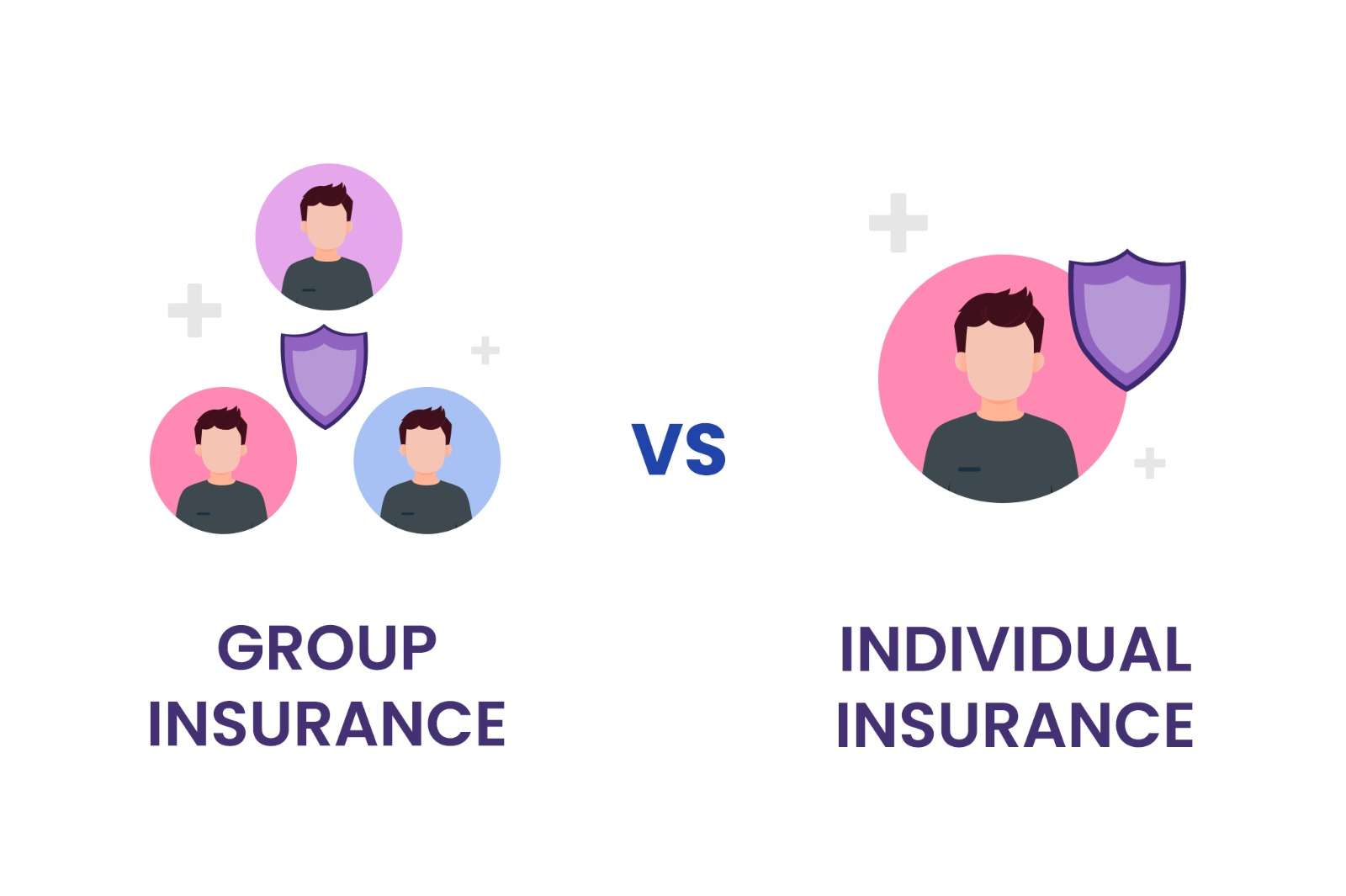Introduction to Group Insurance
When it comes to insurance, there are many options to consider. One of the most popular forms, especially for employees or members of an organization, is group insurance. Group insurance offers coverage to a group of people, often employees or members of an association, under a single contract. It provides individuals with access to affordable, comprehensive coverage as part of a group plan. In this article, we’ll break down what group insurance is, how it works, the benefits it offers, and how to choose the right plan for you.
What is Group Insurance?
Group insurance is a type of insurance policy that covers a group of people under a single contract. The most common type of group insurance is employer-sponsored health insurance, where a company offers coverage to its employees. Other types of group insurance include life, disability, and dental coverage. The key feature of group insurance is that the group is treated as a whole, meaning that coverage is generally provided at a lower cost than individual policies. It’s typically more affordable because the insurer spreads the risk across many people.
Types of Group Insurance
Group insurance can come in many forms, depending on the type of coverage offered. Here are the most common types:
- Group Health Insurance: This is the most well-known form of group insurance, typically offered by employers to their employees. It covers medical expenses such as doctor visits, hospital stays, prescriptions, and preventive care.
- Group Life Insurance: This type of insurance provides a death benefit to the beneficiaries of employees in the event of their passing. It’s usually offered as a basic benefit, with the option to purchase additional coverage.
- Group Disability Insurance: Disability insurance offers income replacement if an employee is unable to work due to illness or injury. It helps employees maintain financial stability during periods when they can’t earn an income.
How Does Group Insurance Work?
Understanding how group insurance works is crucial to determining whether it’s the right choice for you.
Group Insurance vs. Individual Insurance
The key difference between group insurance and individual insurance is the way coverage is provided. In individual insurance, you are personally responsible for purchasing and maintaining your policy. The premium is based on your age, health, and other factors. Group insurance, however, spreads the cost among the entire group, which helps reduce individual premiums. Group plans are typically more affordable, and the coverage may be more extensive because the risk is shared.
Coverage and Premiums in Group Insurance
In most cases, group insurance premiums are lower than individual insurance premiums. This is because the risk is shared across many participants, which allows the insurer to offer more affordable rates. Employers often pay a portion of the premiums, making the coverage even more cost-effective for employees. However, coverage options and premiums can vary depending on the insurer and the type of plan offered.
Benefits of Group Insurance
Group insurance offers several significant advantages for both employers and employees.
Cost-Effectiveness
One of the biggest benefits of group insurance is its affordability. Premiums are usually lower than individual policies, and since the risk is spread across a large group of people, insurers can offer competitive rates. Additionally, employers often subsidize the cost of the premiums, which makes it even more affordable for employees.
Easy Enrollment and Access
Enrollment in group insurance is usually straightforward and doesn’t require medical exams or long application processes, which can be a major barrier for individual insurance. Employees or members of a group can usually opt into the coverage quickly and easily, often without needing to answer many health-related questions.
Comprehensive Coverage Options
Group insurance plans typically offer a wide range of coverage options, from health insurance to life insurance and disability coverage. This allows individuals to get all the coverage they need under one plan, without having to shop around for individual policies.
Employer-Sponsored Group Insurance
For employees, employer-sponsored group insurance is a major benefit. It not only provides access to affordable coverage, but it can also be a valuable retention tool for employers, helping them attract and retain top talent. Additionally, employers often contribute a portion of the premiums, making it a cost-effective option for employees.
Common Types of Group Insurance Plans
There are several types of group insurance plans, each designed to meet specific needs:
Group Health Insurance
This is the most common form of group insurance and is often offered by employers. It provides coverage for medical expenses, such as doctor visits, hospital stays, surgeries, and prescription medications. Group health insurance is usually more affordable than individual health insurance and provides broader coverage.
Group Life Insurance
Group life insurance provides a death benefit to the beneficiaries of employees who pass away. This type of insurance can offer financial protection for families in the event of an employee’s death, often covering funeral expenses and helping with the loss of income.
Group Disability Insurance
Disability insurance provides income replacement if an employee becomes disabled and is unable to work. Group disability insurance is typically offered as a short-term or long-term benefit, depending on the employer and the plan. It helps employees maintain their financial stability during periods of illness or injury.
How to Choose the Right Group Insurance Plan
Choosing the right Visit ETDH website plan is essential to making sure you get the coverage you need. Here are some tips for selecting the best plan:
Assessing Coverage Needs
The first step in choosing a group insurance plan is to evaluate your coverage needs. If you’re looking for health insurance, make sure the plan covers essential medical services, including doctor visits, hospital stays, and prescriptions. For life or disability insurance, assess the amount of coverage needed to protect your family and income.
Comparing Providers and Plans
It’s important to compare different providers and group plans to ensure you’re getting the best value. Look at the premiums, the coverage options, and any additional benefits offered, such as wellness programs or discounts on healthcare services.
Understanding the Terms and Conditions
Before enrolling in a group insurance plan, take the time to read and understand the terms and conditions. Pay attention to coverage limits, exclusions, and any waiting periods. You should also know how to file claims and whether there are any restrictions on pre-existing conditions.
The Role of Employers in Group Insurance
Employers play a crucial role in providing group insurance to employees.
Offering Insurance Benefits to Employees
Employers are often the primary providers of group insurance, particularly for health, life, and disability coverage. Offering group insurance can help employers attract and retain employees while providing valuable financial protection for their staff.
Legal Obligations and Requirements
Employers may have legal obligations to provide certain types of group insurance, depending on the size of the business and local regulations. For example, in some countries, businesses are required to offer health insurance to full-time employees. Employers must also ensure that the plans comply with government regulations and provide adequate coverage.
Challenges and Limitations of Group Insurance
While group insurance offers many benefits, it also comes with some challenges and limitations.
Limited Customization
One drawback of group insurance is that the coverage is generally standardized, meaning it may not meet the unique needs of every individual in the group. Employees may have limited options for customizing their coverage, which can be frustrating for those with specific healthcare needs.
Eligibility Requirements and Enrollment Periods
Group insurance plans often have eligibility requirements, such as being a full-time employee or belonging to a certain organization. Additionally, enrollment periods are usually limited, so employees need to sign up during a specific window of time, or they may miss out on coverage.
Coverage Gaps for Some Members
In some cases, group insurance may not cover certain conditions or treatments, leading to gaps in coverage. Employees may need to seek additional individual insurance to fill these gaps, which can add to their overall healthcare costs.
Conclusion
Group insurance is an excellent option for individuals seeking affordable and comprehensive coverage. Whether it’s through an employer, a professional association, or another group, it allows people to access health, life, disability, and other forms of insurance at a reduced cost. However, it’s important to understand the terms and coverage options of the plan and ensure it meets your specific needs.




